Smartphone users are spoilt for choice when it comes to excellent devices this year. No sooner had Apple announced the iPhone 14 in September than Google followed it with the Pixel 7, which, much like its iOS rival, takes the features that had made its predecessors such popular devices and adds a few extra for good measure. On top of the superb camera and long battery life of previous generations, it throws in compatibility with the newly revealed Pixel Watch while it also offers an attractively redesigned rear camera module.
The question is, how does it compare to the iPhone 14? We answer this question by looking at the different features of each and weighing them up against each other. That way, you should be able to decide which smartphone is for you.
Specs
| Pixel 7 | iPhone 14 | |
| Size | 155.6 by 73.2 by 8.7mm (6.13 by 2.88 by 0.34 inches) | 146.7 by 71.5 by 7.8mm (5.78 by 2.81 by 0.31 inches) |
| Weight | 197 grams (6.9 ounces) | 172 grams (6.07 ounces) |
| Screen size | 6.3-inch OLED with 10-90Hz | 6.1-inch Super Retina OLED |
| Screen resolution | 2400 x 1080 pixels (416 pixels per inch) | 2532 x 1170 pixels (460 pixels per inch) |
| Operating system | Android 13 | iOS 16 |
| Storage | 128GB, 256GB | 128GB, 256GB, 512GB |
| MicroSD card slot | No | No |
| Tap-to-pay services | Google Pay | Apple Pay |
| Processor | Google Tensor 2 | Apple A15 Bionic |
| RAM | 8GB | 4GB |
| Camera | Dual lens 50-megapixel wide, 12MP ultrawide rear, 10.8MP front | Dual-lens 12MP wide and 12MP ultrawide rear, 12MP TrueDepth front |
| Video | 4K at up to 60 frames per second, 1080p at 60 fps | 4K at up to 60 fps, 1080p at 240 fps |
| Bluetooth version | Bluetooth 5.2 | Bluetooth 5.3 |
| Ports | USB-C | Lightning connector |
| Fingerprint sensor | Yes, in-display | No, FaceID instead |
| Water resistance | IP68 | IP68 |
| Battery | 4,355mAh
30W wired charging 21W wireless charging Reverse wireless charging |
3,279mAh
Fast charging (20W charger sold separately) MagSafe wireless charging (15W) Qi wireless charging (7.5W) |
| App marketplace | Google Play Store | Apple App Store |
| Network support | All major carriers | All major carriers |
| Colors | Obsidian, Snow, Lemongrass | Midnight, purple, Starlight, blue, red |
| Prices | $599+ | $799+ |
| Review score | 3.5 out of 5 stars | 4 out of 5 stars |
Design, display, and durability
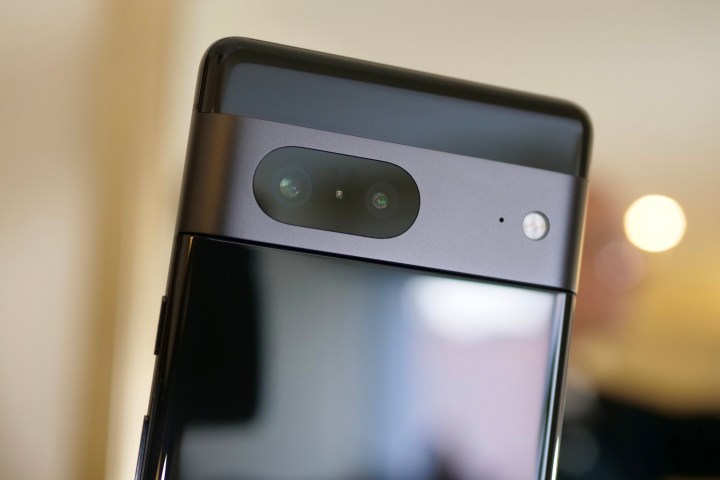
While neither phone goes for reinvention, the Pixel 7 does at least try something noticeably different with its design. Whereas the Pixel 6 featured a horizontal camera visor made of glass, the seventh generation goes with aluminum this time around. This means it ditches the black, darkened appearance of the Pixel 6 and features something arguably a little sharper and more striking. On top of this, the Pixel 7 also ditches the two-toned coloring of the Pixel 6’s rear, instead going for a single shade over its entire surface, which you can have in either Obsidian (basically black), Snow, or Lemongrass (light green).
The iPhone 14, however, changes nothing from the iPhone 13. To be fair, the latter was hardly an ugly duckling, yet the lack of adventurousness on the part of Apple arguably marks down the iOS device a little.
Moving on to displays, the Pixel 7 sports a 6.3-inch AMOLED panel, which is capable of supporting a nice 90Hz refresh rate. It also packs 2400 x 1080 pixels, making for 416 pixels per inch (ppi). As for the iPhone, its 6.1-inch Super Retina OLED screen bests the Pixel in terms of its resolution at 2532 x 1170 pixels (i.e., 460 ppi). Unfortunately, it has a refresh rate of only 60Hz, something that deprives it of the kind of smoothness and fluidity (in scrolling and animations) enjoyed by Google’s device.
As such, the Pixel wins this round by a narrow — but not insignificant — margin. Both phones carry an IP68 rating, so neither has the edge in terms of durability.
Winner: Google Pixel 7
Performance, battery life, and charging
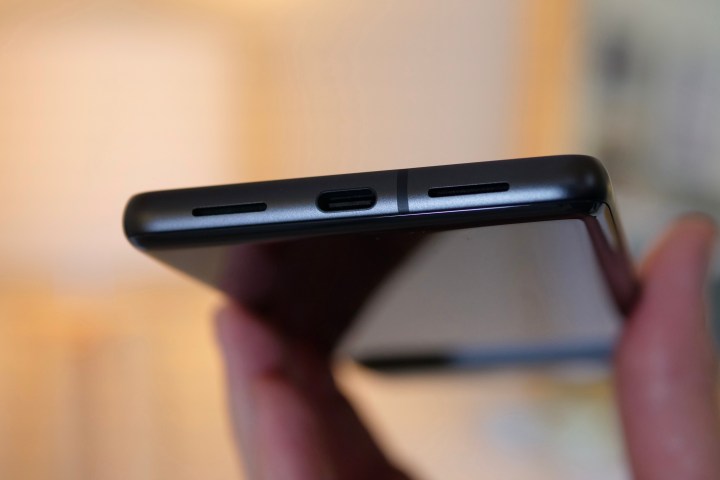
The Pixel 7 runs on Google’s very own Tensor G2 chip, which is the successor to last year’s version. It’s built using a 5nm manufacturing process, so it will prove powerful enough to handle most tasks and apps, especially when coupled with 8GB of RAM. However, our review of the Pixel 7 found that it can struggle with more demanding video games, something that cannot be said for the iPhone 14. The latter uses the same A15 Bionic chip as its predecessor, and while this might seem like an act of tightfistedness on Apple’s part, it still handles intensive computational work without any difficulty.
Both devices come with the same amount of internal memory as standard: 128GB. This can be bumped up to 256GB on both models, while the iPhone also adds the option to go as high as 512GB for an extra $300. Neither has a microSD card slot, so you may need to be careful with downloads and photos if you go with the base storage.
Turning to the battery, the iPhone 14 houses a 3,279mAh cell, while the Pixel 7 offers a bulkier 4,355mAh counterpart. In theory, this should mean that Google’s device comfortably outlasts its Apple rival, but our reviews of each device found that they are both more or less as dependable. In other words, you’ll get just over a day’s use out of each if you’re a moderate or heavy user, while lighter users may come close to a second day before needing to recharge. With charging, the Pixel 7 supports fast charging at 30W, with the iPhone 14 charging at 20W. Regardless, the two phones will recharge at roughly the same rate, with both manufacturers claiming 50% in around half an hour.
Winner: Apple iPhone 14
Cameras
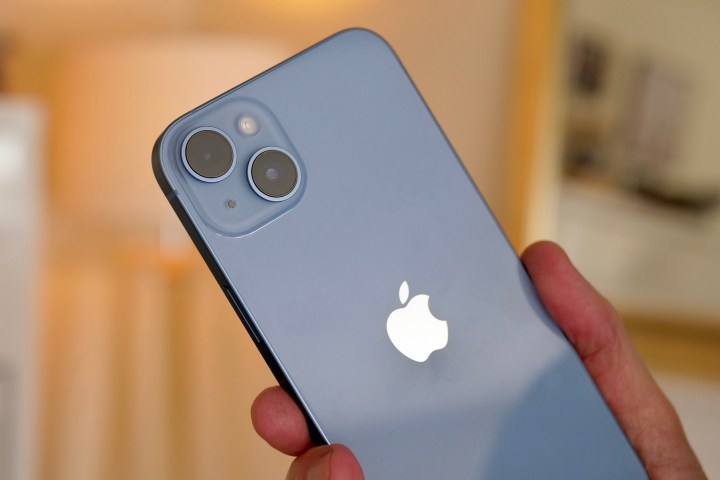
As we’ve seen with the designs of the two phones, neither the Pixel 7 nor the iPhone 14 departs majorly from their respective predecessors when it comes to their cameras. The Pixel’s rear camera setup includes a 50MP wide lens (the same one as found on the Pixel 6) and a 12MP wide-angle camera with a 114-degree field of view. As for the iPhone 14, it has the same basic dual-lens rear camera setup as the iPhone 13, with a 12-megapixel main (wide) lens and a 12MP wide-angle camera. That said, the main lens features a larger sensor and slightly more pixels, while there’s also a new 12MP front camera with autofocus and low-light photography improvements.
Of course, if it ain’t broke, don’t fix it, and for several years now, both the Google Pixel and the iPhone have offered easily the best camera phones around. This is also the case with their latest generations, with the Pixel 7’s main lens producing excellent, punchy shots. Similarly, its ultrawide lens also delivers well-balanced photos with plenty of color, detail, and dynamism, something that can also be said for the iPhone 14’s ultrawide camera.
The same goes for the iPhone’s main lens, meaning that both devices are pretty evenly matched as far as photography goes. With both capable of shooting 4K video at 60 frames per second (fps), this means we have another tie.
Winner: Tie
Software and updates
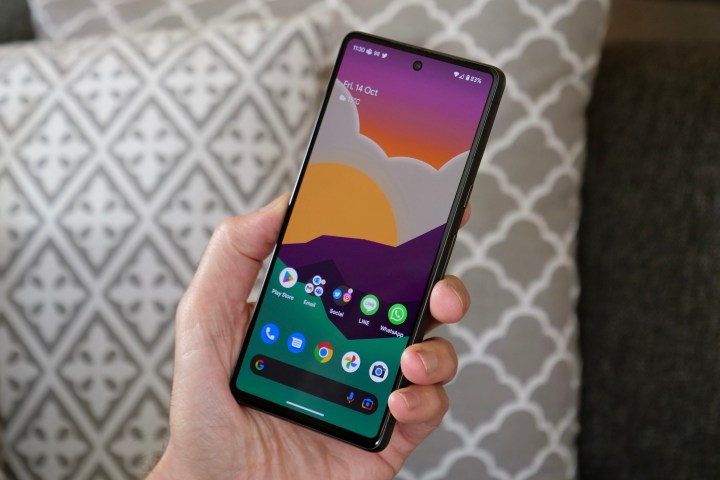
The iPhone 14 runs on iOS 16, while the Pixel 7 uses Android 13. Both operating systems have their strengths and weaknesses, with Android 13 updating its overall design to incorporate larger icons and more user-friendly menus. On the other hand, our review of the Pixel 7 Pro found that it can sometimes be a little buggy, with formatting issues, problems opening and exiting games, and unwanted shadows, sometimes forcing the user to restart the phone altogether. This isn’t to say that most or even a significant amount of users will experience such problems, but they raise a question mark that may need some time (i.e., software updates) to answer.
This isn’t something that can be said about the iPhone 14, which above all else, provides a very easy and uncomplicated user experience. It will also likely provide the user with more core software updates since even though Google has committed to three core updates (and five years of security updates), Apple will likely outstrip this by two or three years.
Winner: Apple iPhone 14
Special features
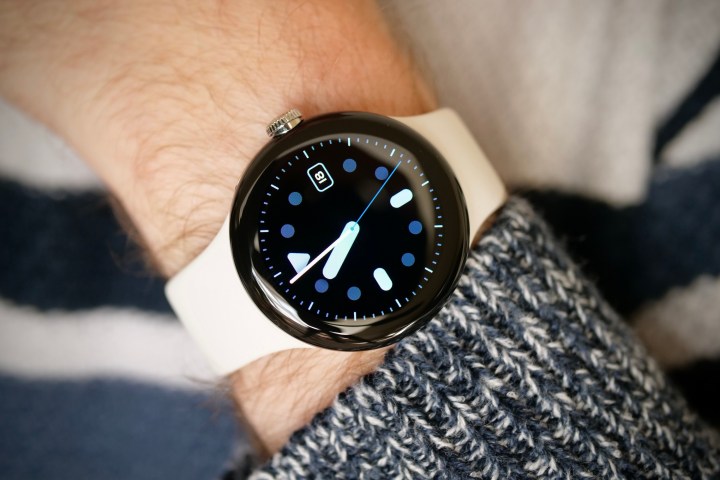
The Pixel’s main special feature is that it’s compatible with Google’s new smartwatch, the appropriately-named Pixel Watch. The latter offers users the ability to monitor their health and fitness (via a partnership with Fitbit) while also offering a very welcome Emergency SOS feature that will call 911 under certain circumstances.
Funnily enough, the iPhone 14 also comes equipped with its own brand-new Emergency SOS Over Satellite feature, enabling it to send emergency messages even without a phone signal. In addition, it also has a Crash Detection feature that detects sudden rises in G-force (and sounds associated with car accidents). This has resulted in people inadvertently calling the emergency services while riding rollercoasters, yet it could prove life-saving for many people.
Aside from these new additions, both phones boast special features seen with previous generations. This includes 5G support, Face ID on the iPhone, AI-powered features on the Pixel (such as spam call detection), and the contactless payment methods of each respective device.
Winner: Tie
Price and availability
The Google Pixel 7 is available directly from Google and costs $599 for the 128GB model or $699 for the 256GB version. It’s supported by all major carriers and sold widely by retailers.
The Apple iPhone 14 starts at $799, with the 256GB and 512GB models costing $899 and $1099, respectively. It can be purchased directly from Apple or bought via any number of third-party retailers. It’s also supported by all major networks.
Overall winner: Apple iPhone 14
The two phones are evenly matched, yet the iPhone 14 wins in a couple of important areas, enabling it to carry home a win overall. Its performance beats the Pixel 7, while it also offers slicker, more reliable software. Otherwise, the two smartphones excel in similar areas, with both featuring attractive designs, sharp displays, long-lasting batteries, and outstanding cameras. Of course, if you prefer Android, then the Pixel may still be the way to go, but if you have no preference, there’s no denying the iPhone 14 is a little more capable as a whole.
Editors’ Recommendations




